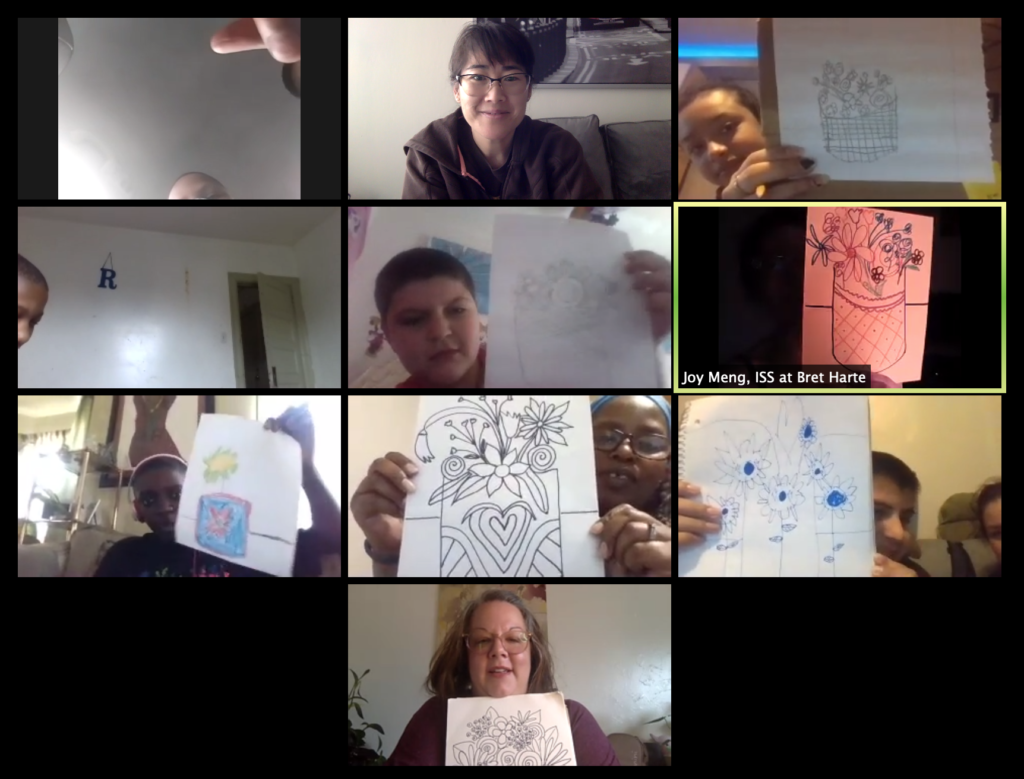And So it Begins…

Today begins my first day teaching fully online. I sent out a message via Remind.com to the parents I already have contacts for that there will be lessons online, and I’m already starting to see messages trickle in. It’s good to hear from my students and know that they are out there and doing OK. This has calmed my mind a lot, and hopefully just seeing classmates’ faces and responses will help them to feel more at ease, too.
I attended a virtual meeting this morning with a lot of Fine Arts teachers who were in various stages of moving their instruction online. Some were struggling with Google classroom for the first time. Many were excited about the opportunity to try something new — a character trait that is pretty common among the creative class. A few were overwhelmed and confused about how to move a very in-person practice (like music) completely online. These feelings are fair, too. We are building the plane as we are flying it, and uncertainty is uncomfortable.
As we transition from in-class to online teaching, a few thoughts have come to my mind, so I’ve decided to document them for others who could benefit from some perspective.
- Most school systems do not have adequate digital learning in place for a shift of this magnitude. Nobody is ready to switch to online learning with only a couple days’ notice. This is both frustrating (because there will be some obstacles and failures) and exciting (because we have a lot of freedom to interpret what that will look like), so we should look at this as an opportunity to explore new ways to teach. Keeping this in mind will be key to building systems that will benefit students whether they are learning in classrooms or from home.
- Many students and their families still do not have access to technology, though it is interesting that there are major efforts to get adequate tech and internet access to students who need it. Back in the day, internet was considered a luxury. I think we are seeing that access to information is a social justice issue, and that in times of crisis, being able to learn and share information online is no longer a luxury — it is a basic human need. Hopefully this crisis will end with more access in place to families who need it. We certainly need to keep this in mind as we prioritize educational funding, and as we decide how to move forward during this shutdown.
- Online learning keeps students connected. Yes, ultimately we want students to continue learning while we’re out of school, but to students, school is their connection to society. Just as it’s important to ensure that students are nurtured with good food and learning, we need to ensure that they have a connection to each other. Building in ways for students to interact is so important. Including video instruction, creating online dialogue, adding a chat room — these are all great ways to keep kids and their families in touch with their school community during the shutdown. During regular, in-school learning, this issue doesn’t go away. Many students have situations that make it hard to attend school regularly — health issues, shared custody with a parent who lives far from school, transportation difficulties… having an online classroom space where students can access your classroom makes a huge difference in whether they can overcome these difficulties.
- Suddenly, digital literacy is in the forefront! All the technology we’ve been blocking and banning is now the key to reaching our students. Students (and teachers!) are quickly learning basic digital skills as we shift to learning online. Those cellphones we’ve been banning and putting into locking pouches might be the only devices our students have to learn on. We can use this time to teach our students how to be productive in a digital world that doesn’t contain blocks and bans.
- We’re all in this together. Seriously — the whole world is grappling with how to handle moving teaching online, in one way or another. We all have varying levels of comfort with this shift. There are so many resources already out there, including people we already work with. Nobody is alone in this. Search for help and you will find it.
- Priorities are different, now. Look, this is a global pandemic. Our biggest priority is public safety. Grades and testing are taking back seat. A wayyyyy back seat, like in one of those 9 passenger vans. (Maybe they’re in the trunk.) For now, at least, let’s focus on authentic learning experiences that reinforce community-building, staying healthy, and digital citizenship. A colleague of mine suggested that we take this time to teach something we never have time for. Let’s make learning fun — joy is something we can all use a lot more of right now. I promise, the testing isn’t going anywhere. It will be there when we get back.
As I was writing this piece, more student responses have started trickling in as kids log in and discover their Flipgrid “Question of the Day.” With each new email alert, I am reminded of how resilient my students are, and how they really do want to learn. Each “bing” is a reminder of the fact that students need school, even during a global pandemic. It looks like we’re going to be doing this for a while, so we have time to work out the details as we go.